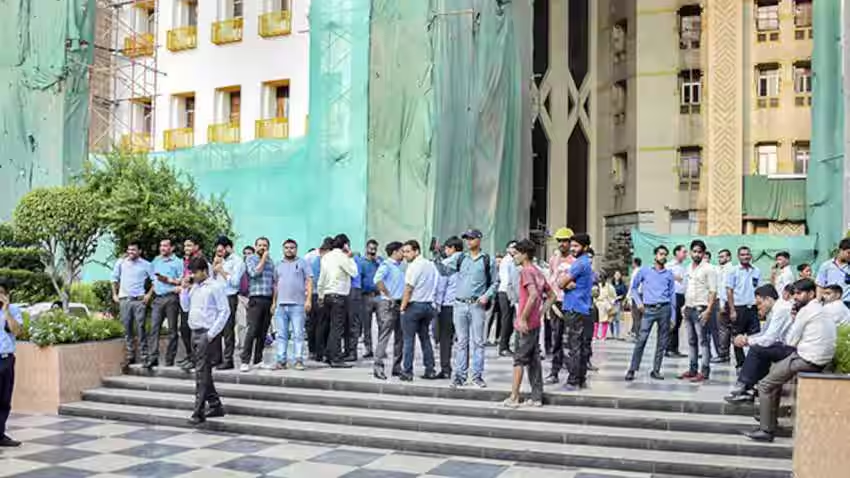Early on Monday, February 17, 2025, people in Delhi and the nearby National Capital Region (NCR) woke up to a sudden shake. An Earthquake in Delhi of 4.0 magnitude hit at 5:36 AM, causing worry among residents. This incident has once again highlighted Delhi’s risk of earthquakes and raised concerns about how well the city is prepared for such disasters.
Immediate Effects and Damage Assessment
Luckily, even though many people felt the earthquake, there were no reports of injuries or major damage. The tremors were felt across Delhi-NCR, including Noida and Gurgaon. People in high-rise buildings felt the shaking more strongly, which caused panic.
Emergency services stayed on high alert, ready to help if needed. However, since there were no major damages, it seems that the city’s buildings handled the earthquake well. This is a good sign, but it doesn’t mean we should stop being careful.
Delhi’s Seismic Setting: A City on Shaky Ground
Delhi experiences earthquakes because of its location. The city is in seismic zone IV, which means it has a high risk of earthquakes. Most earthquakes in this zone have magnitudes between 5 and 6, but some can be as strong as 6 to 7.
One reason for Delhi’s earthquake risk is its proximity to the Himalayas, one of the most earthquake-prone areas in the world. The Indian and Eurasian tectonic plates are constantly pushing against each other in the Himalayas, creating seismic energy that can impact Delhi.
Locally, several active faults, such as the Mahendragarh-Dehradun Fault and the Sohna Fault, also increase the risk of earthquakes. These faults form a network that can cause tremors within the region.
Understanding Delhi’s Seismic History: A Reminder of Earthquake Risks
Today’s earthquake is not unusual for Delhi. The city has experienced many earthquakes in the past, some stronger than others. One of the biggest recorded earthquakes in the NCR happened in 1960, showing that more powerful quakes are possible.
In 2020, Delhi had a series of small earthquakes with magnitudes between 3.3 and 4.4. These tremors reminded people that the region is still seismically active and raised concerns about the possibility of larger earthquakes in the future.
Enhancing Earthquake Preparedness in Delhi: Community Initiatives and Government Efforts
Today’s earthquake is a reminder of why earthquake preparedness is important in Delhi. The city has been taking steps to improve safety through different programs:

- Community Awareness: Training sessions and campaigns teach people how to stay safe during earthquakes. These programs have helped many residents become better prepared.
- Government Initiatives: The National Seismic Risk Mitigation Programme (NSRMP) works to reduce earthquake risks by improving buildings and spreading awareness. The National Disaster Management Authority (NDMA) also holds workshops and training to improve emergency response.
- Stronger Buildings: Rules have been made to ensure buildings can withstand earthquakes. However, Delhi’s fast growth makes it difficult to ensure all structures are built safely.
- Early Warning Systems: Scientists are working on systems that can warn people a few seconds before a strong earthquake, but these are not fully in place yet.
Looking Ahead: Lessons and Challenges
Today’s earthquake is a reminder for Delhi’s residents and authorities to stay prepared. While there was no major damage this time, it’s important to keep improving earthquake safety. Here are some key points to remember:
- Public Awareness: People should learn how to stay safe during an earthquake and have an emergency plan ready.
- Stronger Buildings: Old buildings should be made stronger, and new ones should follow earthquake safety rules.
- Emergency Response: Regular drills and updated response plans can help people react quickly in a bigger earthquake.
- Smart Urban Planning: As Delhi grows, new buildings and spaces should be designed to handle earthquakes safely.
- Research and Monitoring: Scientists need to keep studying earthquakes in the region to better understand and predict future risks.
Conclusion
Today’s earthquake in Delhi was small, but it reminds us that the city is at risk of bigger ones. As Delhi continues to grow, earthquake safety must stay a top priority. By learning from each earthquake, strengthening buildings, and staying informed, we can make the city safer.In places like Delhi, earthquakes are not a question of if they will happen, but when. This is a chance to improve our preparedness so we are ready for any future tremors.










